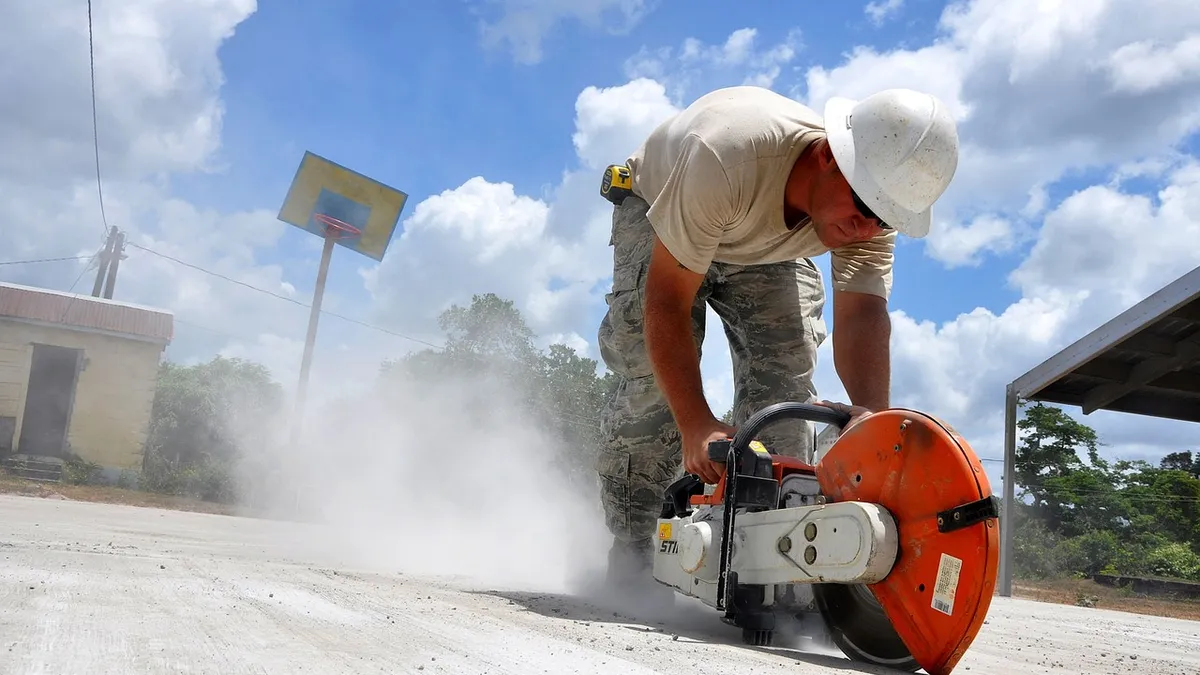Dive Brief:
- As of April 17, OSHA and state safety agencies have issued 116 violation citations under OSHA's new silica safety rule, Bloomberg BNA reported. The regulation went into effect Sept. 23, but OSHA began full enforcement Oct. 23.
- The most frequently mentioned violation involved contractors allegedly failing to measure silica levels, which was the subject of 35 citations. The was followed by 31 citations to those that did not comply with the regulation's Table 1, which identifies 18 procedures firms can follow as an alternative to air monitoring. Despite the issuance of citations, enforcement of the rule has been limited, with contractors being tagged for silica violations as part of investigations into other unsafe jobsite conditions like inadequate fall protection. The majority of violations (80%) were classified as serious, but the highest fine imposed was $9,239 — short of the potential maximum of $12,934.
- Even though OSHA postponed enforcement 30 days to allow more time for compliance, contractors still maintain that there are ambiguities and omissions in the rule that could lead to a citation. The National Association of Home Builders has submitted questions regarding the silica rule to OSHA in the hopes that the agency will beef up the compliance guidelines it posted on its website.
Dive Insight:
The fall update to the silica standard was the first major change since it was established in 1971. The rule targets silica dust particles, which are 100 times smaller than sand granules. Those workers who breathe in too much silica dust can develop the fatal lung disease silicosis, lung cancer, kidney disease and chronic obstructive pulmonary disease.
Many construction industry organizations fought implementation of the silica rule up to the U.S. Court of Appeal for the D.C. Circuit, which decided that OSHA's decision to lower the permissible exposure limit to dust generated from the substance was a reasonable one. OSHA lowered exposure limits to 50 micrograms per cubic meter of air over an average of eight hours from 250 micrograms per cubic meter over the same time period.
President Donald Trump came into office promising to roll back costly and burdensome regulations, and the construction industry no doubt hoped the silica rule would meet the same fate as what some perceived as the pro-union "persuader" rule and a new overtime regulation. However, the appeals court decision is a sign that laws geared toward increasing worker safety could be somewhat immune to industry and administration pressure.














